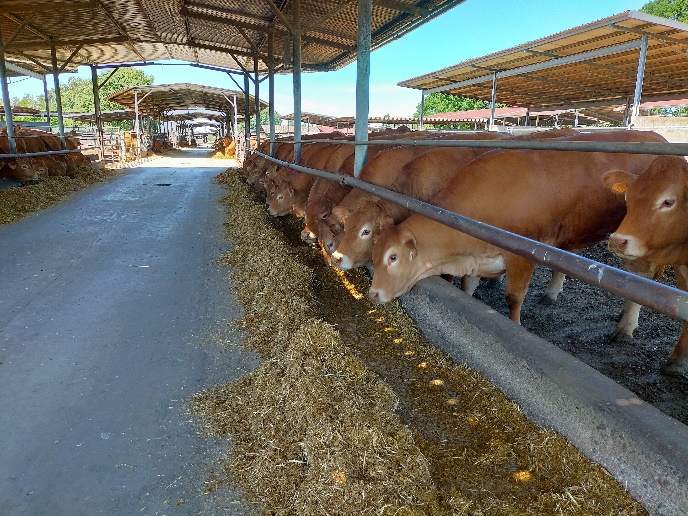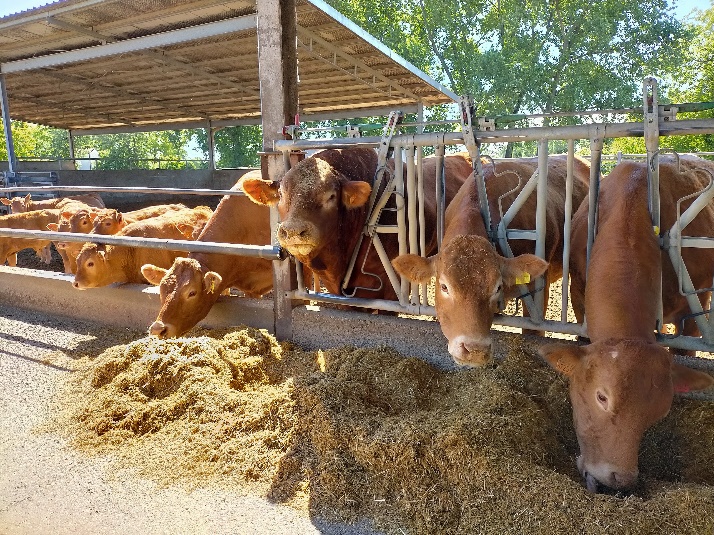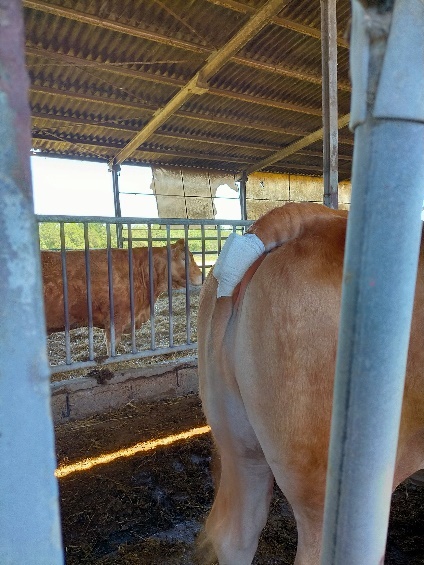Introduction to the challenge addressed Biancardi is one of the very few zootechnical entrepreneurs in Northern Italy who raise beef cattle (Limousine) according to the cow-calf line technique. Some similar cases may be found among those who raise native breeds, such as Piemontese, Romagnola or Marchigiana, or among those who can count on pastures, as happens in some Alpine or Romagna valleys. The farm is located in Maccastorna (Lodi province, North-West Italy) and rears high genetic Limousine beef cows: 18% for farm replacement, 15% sold to finishers, and 67% sold as breeding/reproduction cows to national or abroad farmers. Regarding bulls, 15% are used for reproduction and the remaining 85% sold to finishers at 7 months and 330 kg after weaning. The combination of several good practices adopted by farmers allow to make the entire farming system more efficient, increasing the number of calvings per year and reducing the calving interval.
| ||||
| ||||
Description of Innovation The farmer provides different diets to each animal category in order to fulfil specific nutrient requirements: heifers, cows with or without calves, dry cows, finishing calves; and he severely controls both pregnancy and calving phases. Diet for lactating cows consisted of: grass silage, wheat and ryegrass, maize silage, straw, tomato hulls a supplement with sunflower flour, mineral and vitamins. Dry cows fed a similar diet without tomato hulls, with less silages, and more straw. In the farm natural service is adopted: 1 bull for 17 beef cows. The natural reproduction occurs in opened large digestate-bedded pens where beef cows, bull, and calves are all together up to the seventh month of age of calves. After 70 days from the natural mating, a diagnosis of pregnancy is done. One week before calving, cows are moved to a separate calving pen where they are equipped with a calving sensor on the top of tail that alarms farmer when cows moves the tail, lies and stands more frequently and turn in circles. The calving area is composed by more collective pens hosting 40 cows (opened and connected to each other), with a central pen used for daily cows’ control and interventions during calving. One month after calving, mothers and calves are moved in the large digestate-bedded pens previously described. Here, calves have an exclusive narrow passageway where they eat and get together. During this period, calves are weighed 3 times every 4 months (90, 120, and 270 days). | ||||
| ||||
Impact on farm performance With all these practices combined, farmer achieves a total calves’ mortality from birth to 7 months of 7%, of which only 1% occurs during calving. Additionally, he achieves 392 days of calving interval (-18 days from the National average that is 410 days), and 700 calvings/year. From the market point of view the production can be presented to the consumer with the "triple It": born in Italy, It, bred in Italy, It, slaughtered in Italy, It. Biancardi is also carefull about animal health and welfare, with a continuous monitoring of animals, which are mostly dehorned by genetic and have a large space allowance during all their stay in the farm. He also cares about environment with the use of byproducts in feeding and also in housing of animals.
| ||||
| ||||
Audio-visual material
Open housing systems with cows, bulls and calves
Calving sensor and pregnancy barn | ||||
| ||||
Farmer comment (for Good Practices) “The presence of the suckler beef cow allows an autochthonous production. I provide the national farmers and national market to calves born, reared, and slaughtered in Italy”. "When there is animal welfare on a farm, when animal health is assured, when there is food and health continuity between the first part of the calf's life and the subsequent fattening phase, as in our case, it is almost automatic that the beef will ultimately be of superior quality. An optimal management of the cattle since the first months of life is undoubtedly a plus for the zootechnical enterprise, not only for a rational management of the breeding, but also when it comes to the satisfaction of the consumer". | ||||
| ||||
Further information Stalle in Primo Piano. Azienda Biancardi: https://informatorezootecnico.edagricole.it/senza-categoria/azienda-biancardi/
| ||||
|



